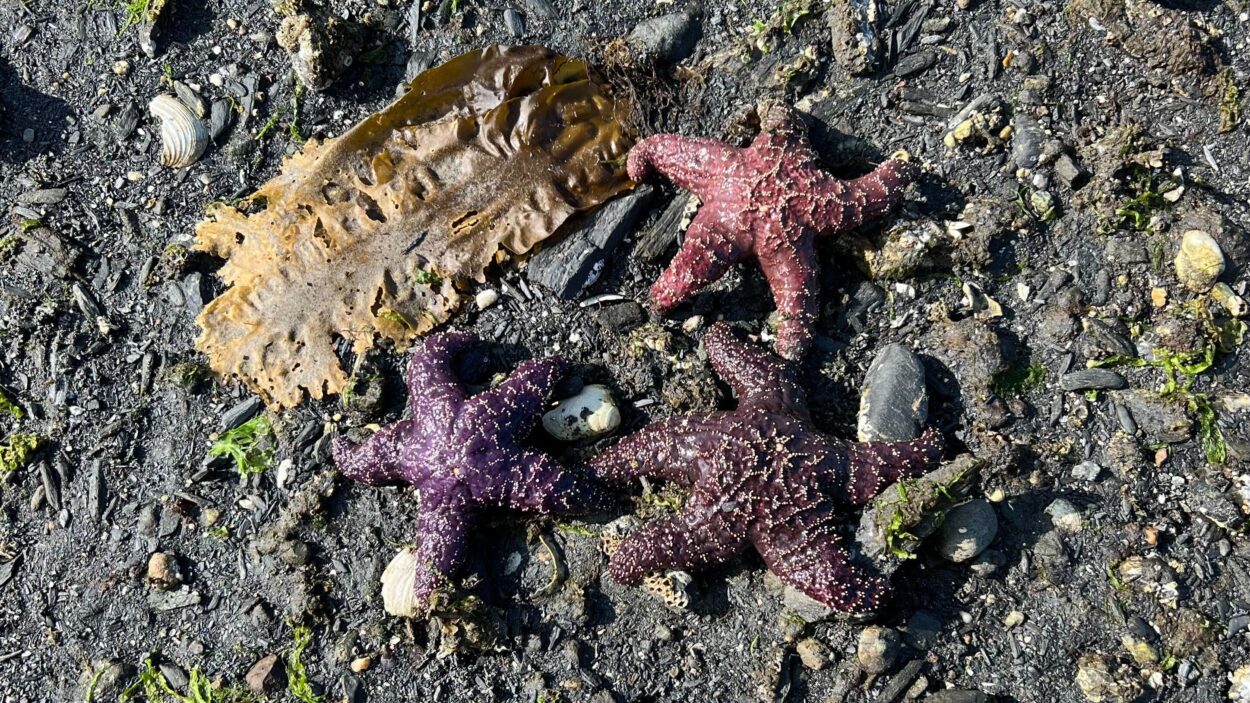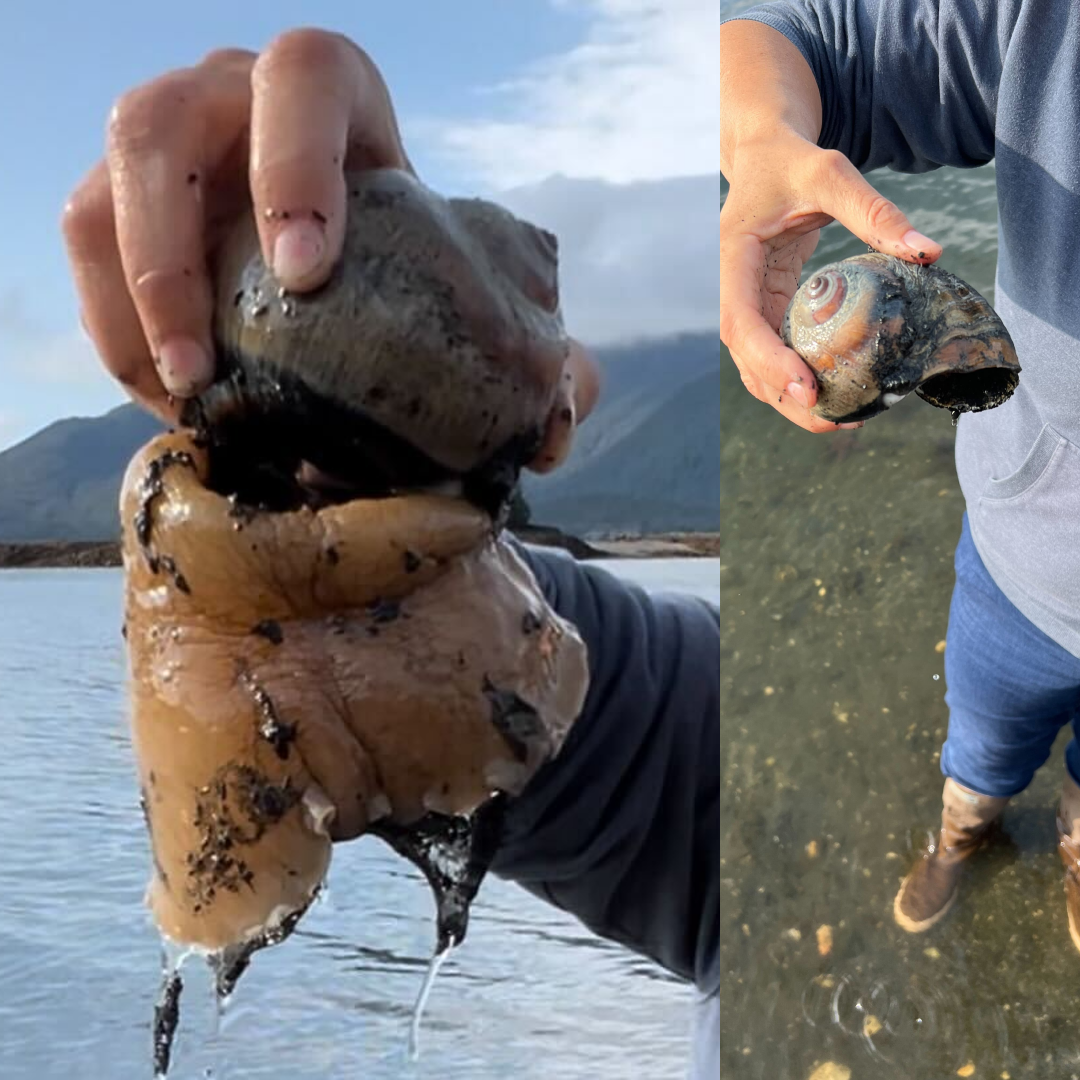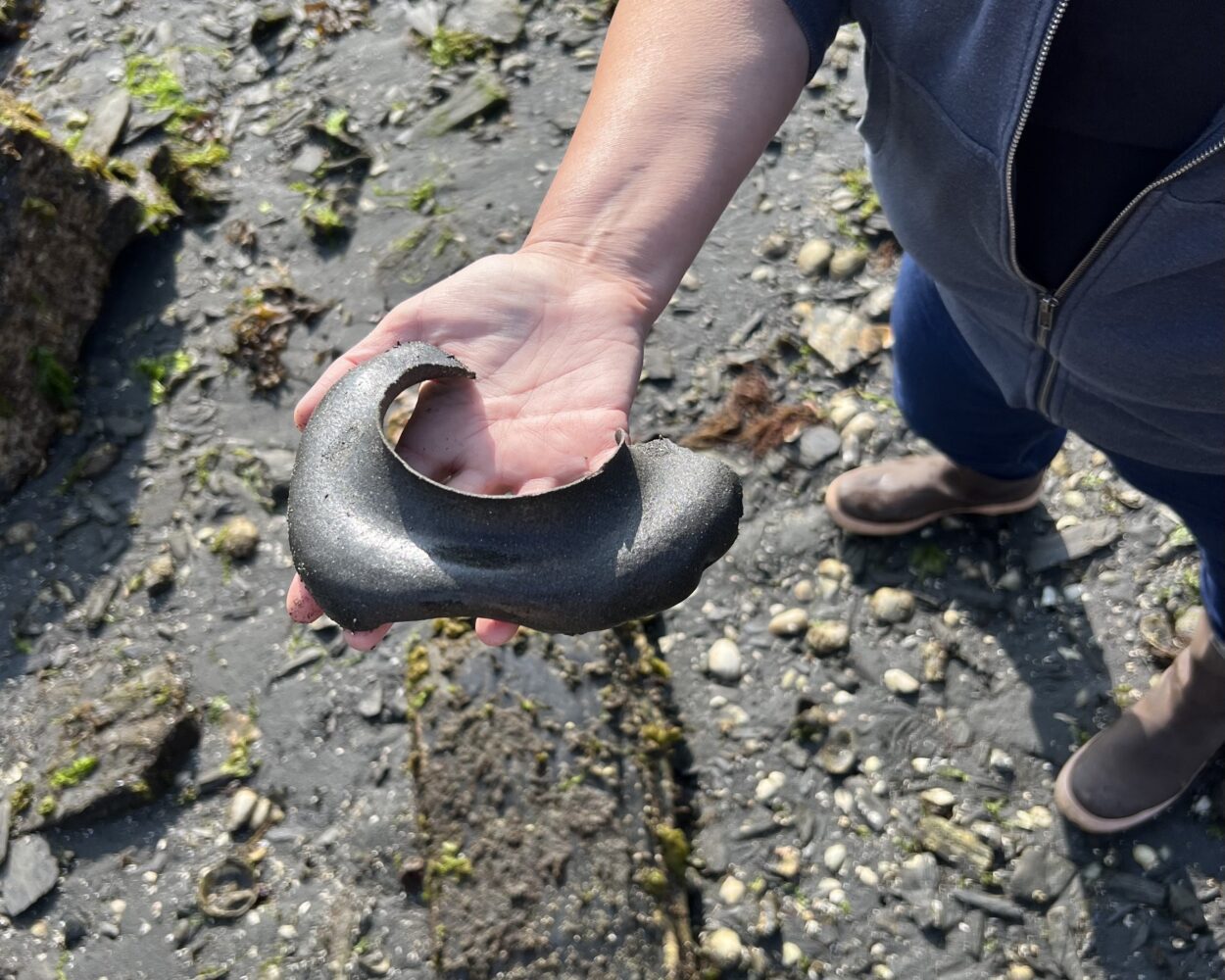
One of the world’s oldest pastimes, at least for folks along the coast, is heading to the shore when the tide changes. When the ocean retreats, it leaves little diverse pockets of the ocean life, trapped until the tide returns. The Pacific Northwest is especially famous for the diversity of intertidal life along its shores.
Tides are caused by the moon’s gravity pulling water on Earth in different directions. On a full moon though, tides can be especially high or low. And those extreme lows are when Barbara Morgan likes to go to the beach.
“There’s so, so much to know about what lives on the beach and where you can find it and interactions between different things, that you can spend a lifetime doing it and still not know everything yet,” said Morgan, a naturalist and professor at the University of Alaska Southeast, as she walked along beach. She’s spent her whole life combing beaches in this region.
Much of what Morgan is walking on is usually underwater. The rocks and gravel are covered in seaweed and barnacles and eelgrass, all different shades and alive with movement.
Though, there is also a lot going on that’s hidden from view. Morgan laid out an important rule of tide pooling etiquette:
“Look at what’s underneath the rock and carefully put it back so that everything under the rock is protected and everything on top of the rock is still on top of the rock. Everybody wants their home back how they had it,” Morgan said.
She flipped a couple rocks. Underneath, each was like its own little village – a pygmy rock crab the size of a penny, baby Dungeness and purplish Graceful crabs the size of quarters, clear intertidal shrimp that looked like they were made of neon green glass. And many creatures that looked like tiny eels.
“Those are the gunnels, which are not eels. Gunnels are not eels. Those little fish underneath the rocks that are long and skinny are not actually eels. Contrary to popular belief, here in Ketchikan -” Morgan was interrupted by a nearly 4 foot spout of water straight from the ground. “Wow, that was a big horse clam, probably.”
All across the cove, little spurts were shooting up, seemingly at random. Morgan attributed it to a clam bed beneath our feet.
Morgan said there are four main types of clams in this area: butter clams, littleneck clams, heart cockles, and horse clams. She said when the clams that were burrowed into the ground below us squeeze their shells together, it creates a water spout. When the tide is in, they use it to filter the water for plankton and oxygen and then get rid of the waste by spitting the water back out.
“And they’re really just waiting for the tide to come back in,” Morgan said.

Nearby, there was a mound of sand at the water’s edge. Morgan thought it was a moon snail. They feed on clams. When they find them, they drill tiny, precise holes in the back of the clam’s shell and inject digestive enzymes.
“And then once the clam is dead and opened up, they can slurp it all up,” Morgan explained. “So this guy is trying to dig a clam right now, but I’m gonna dig him out, and…”
Morgan dug into the sand and mud and then exclaimed, “Look at how big that is, guys!”
“Holy cow!” A young bystander shouted.
The creature Morgan dug up was huge. It looked prehistoric – maybe because, in a way, it was. Moon snails have been around since the Jurassic period. That means the species has survived for an estimated 145 million years or so – humans have been around for 0.2% that long. The multicolored, spiraled shell is about the size of a baseball but with a giant orange blob coming out of it.
“This is the foot of the moon snail,” Morgan said pointing to the orange mass.
She said that if the snail feels threatened, it will retreat back into its shell and close up shop. It really didn’t seem possible. The foot was huge – a big, fleshy mass twice the size of the shell. She poked it.
“Okay, here – there he goes,” she said as water and clear slime began pouring from the moon snail.
Within seconds, it shriveled back into its shell and closed a little flap – called an operculum – behind itself like a trapdoor. Morgan said moon snails absorb water to expand and when threatened, they can force it all out of their cells like squeezing a sponge.
“It’s pretty amazing that it can move that much water and slime out of its cells and completely out of its body that quickly,” Morgan said.
This was a somewhat rare find. According to Morgan, moon snails don’t spend much time near shore, except during extremely low tides in the spring and summer, when they head into the shallows to spawn. There was evidence of moon snails spawning all over the beach, hidden in plain sight.
Morgan walked over to what appeared to be a broken rubber gasket – the kind that hold PVC pipes together.
“That’s not gasket material,” Morgan said. “It is the egg mass of the moon snails. So you shouldn’t clean up the beach of the gray gasket looking things, because you’re killing moon snail larvae.”

Not everything in tidepools are alive though. There was a dead Dungeness crab nearby.
“Life is hard on the beach,” Morgan said as she passed it.
It is a common misconception that an empty crab shell always means the crab died though, she said. It may have just molted its shell.
The surf was also strewn with clamshells. They aren’t as lucky. If you see a clamshell on the beach, it means the clam died.
But it doesn’t mean it died recently. Morgan said a local geologist tested clamshells from a nearby island and found that, shockingly, some of them belonged to species that left the region or gone extinct long ago.
“So I think that these could potentially also be hundreds of years old, and we just don’t know because we haven’t tested them,” Morgan said, gesturing at the shells along the tideline.
The clamshells beneath your feet could be centuries old. Another piece of tide pooling etiquette: watch where you step.
A few steps away, there was an entirely different ecosystem among the bigger rocks. They were covered in seaweed and dotted with nudibranchs (colorful little sea slugs) and chitons (little mollusks that look straight out of a dinosaur movie.)
There are some spiny green sea urchins, which Morgan said have one of the longest scientific name of any sea creature: Strongylocentrotus droebachiensis.
And of course, tons and tons of sea stars. Sea stars range all over the ocean floor, but when the water retreats, they have to endure hours exposed to the sun and predators. Morgan said that they’re here for a shot at some blue mussels.
Sea stars can regrow their limbs, as long as part of their “central disk” – where the legs meet – is intact. Morgan said this was discovered the hard way by lobster fishermen on the East Coast.
“Lobster fishermen were tired of the sea stars eating their bait and ruining their fishery, and they started chopping them up and throwing them back in the water to kill them. But the population of sea stars just exploded because they were just making lots and lots of sea stars. Every leg, or whatever they had with part of that central desk left, grew a whole new sea star. So that was some accidental science happening,” said Morgan.
Like the hundreds of other intertidal species dotting this stretch of rocky shore, they are here going about their biological business: surviving for a few hours here on land, with us, until the tide comes back in.
Get in touch with the author at jack@krbd.org.





